In the realm of Japanese antiques, few items resonate as deeply with the philosophy of impermanence and quiet beauty as a well-worn tea bowl. This Karatsu ware chawan from the early to mid-Edo period (17th–18th century) captures that spirit perfectly—with its weathered glaze, earthy clay body, and a golden kintsugi repair that speaks to centuries of use and reverence.
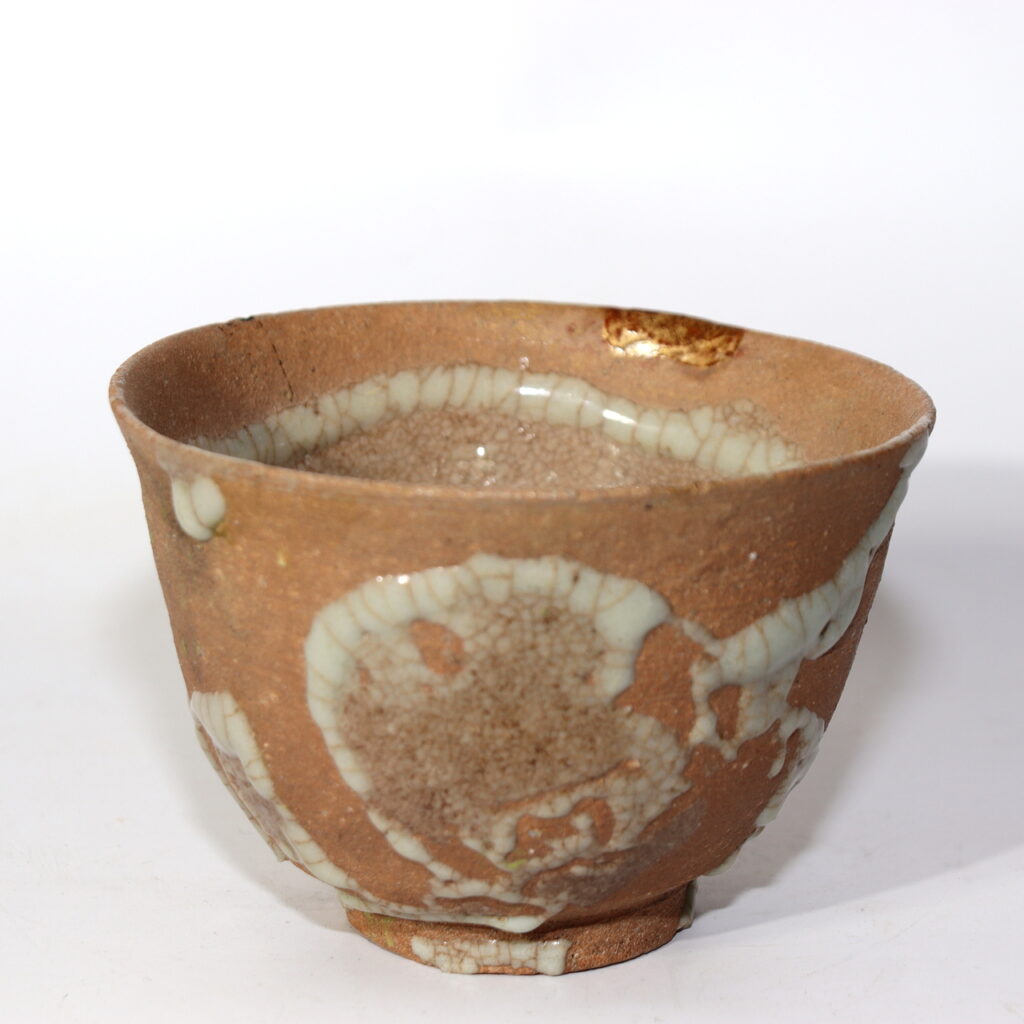
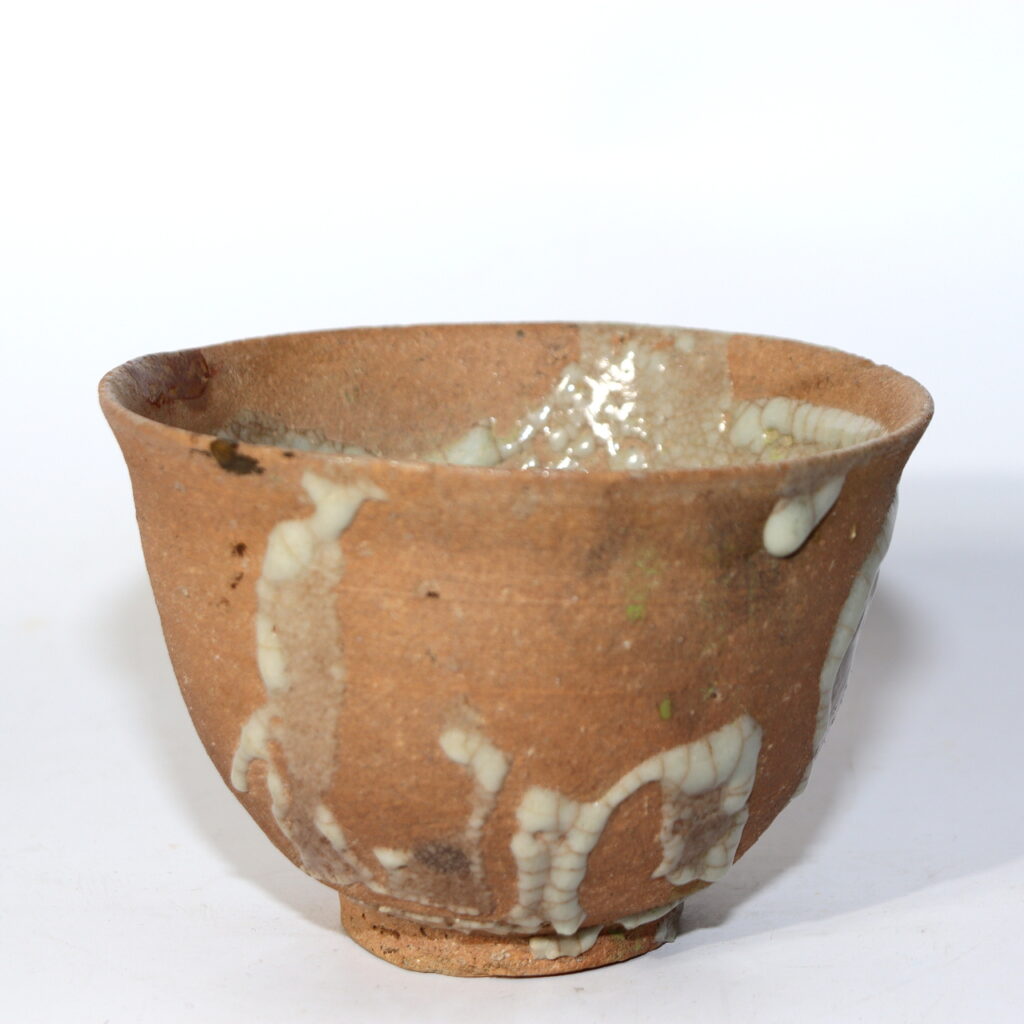


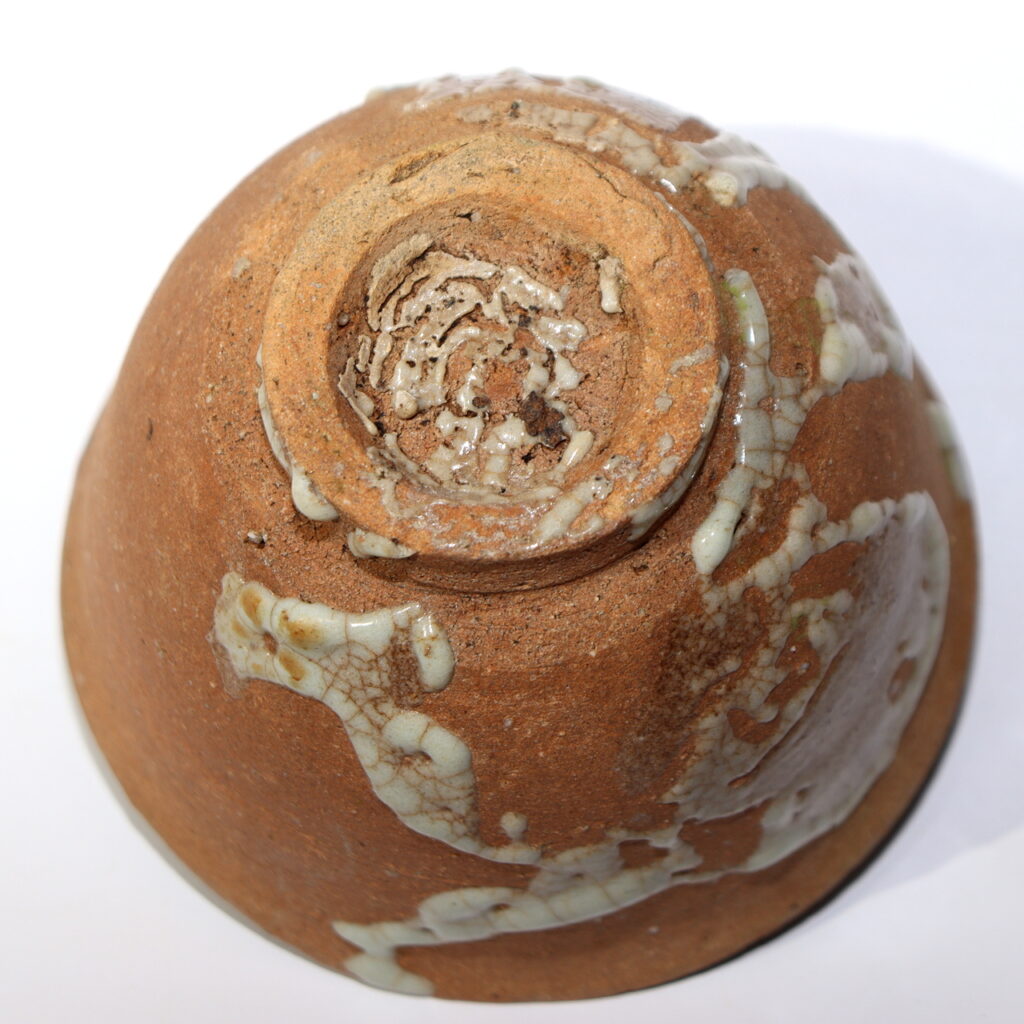


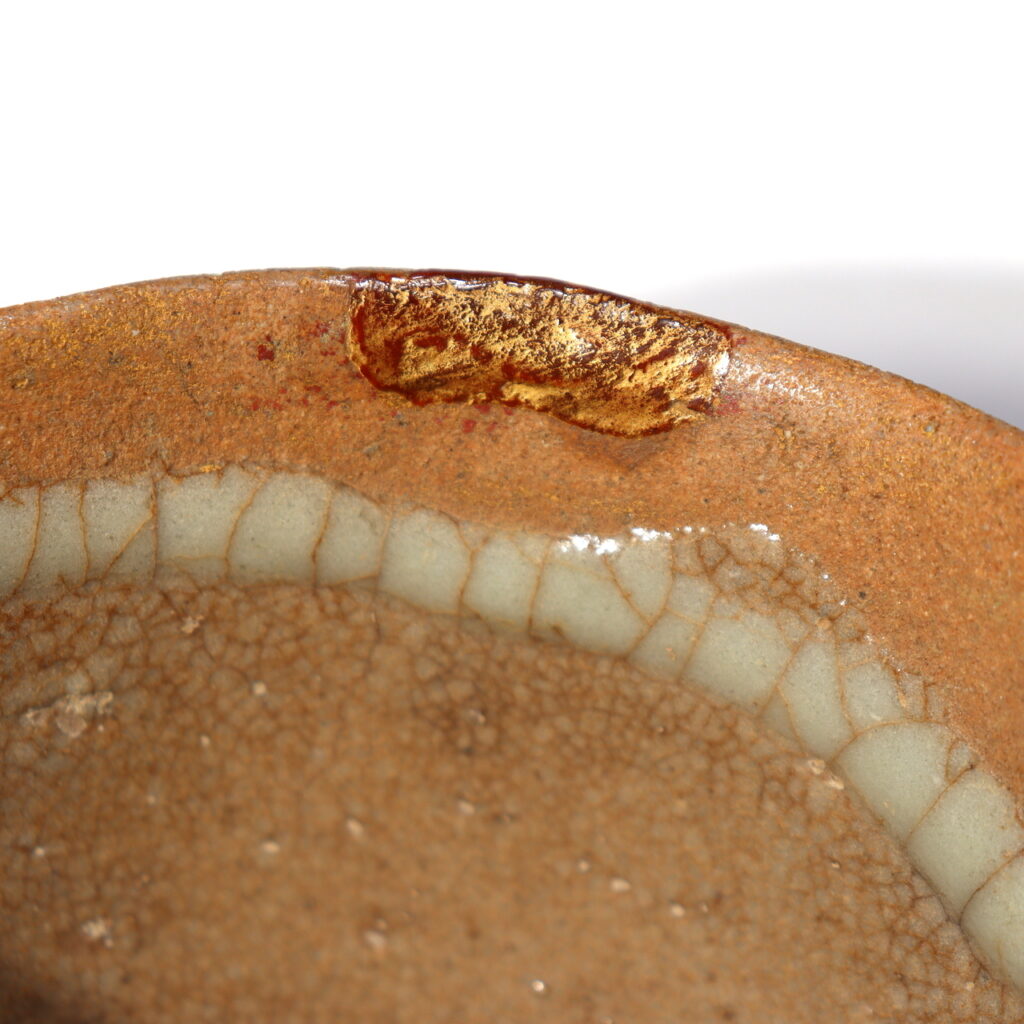
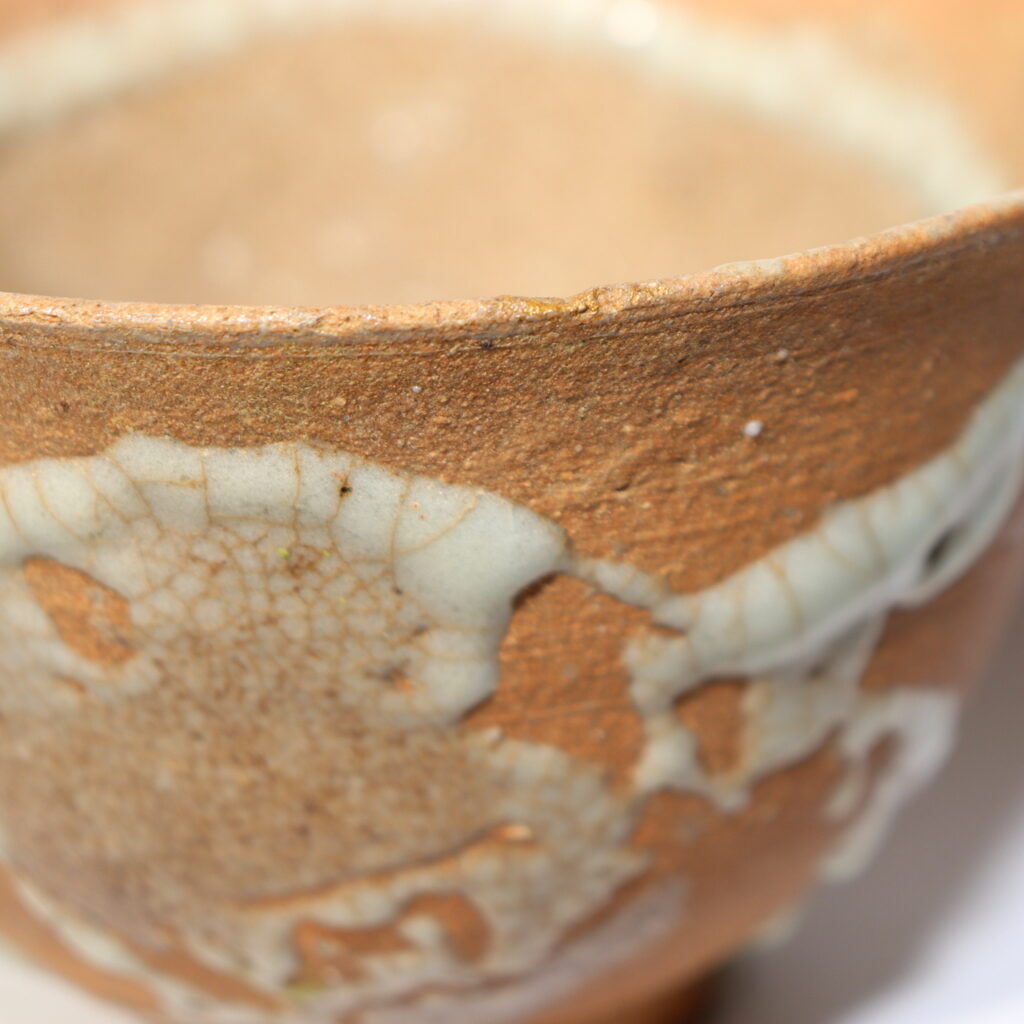
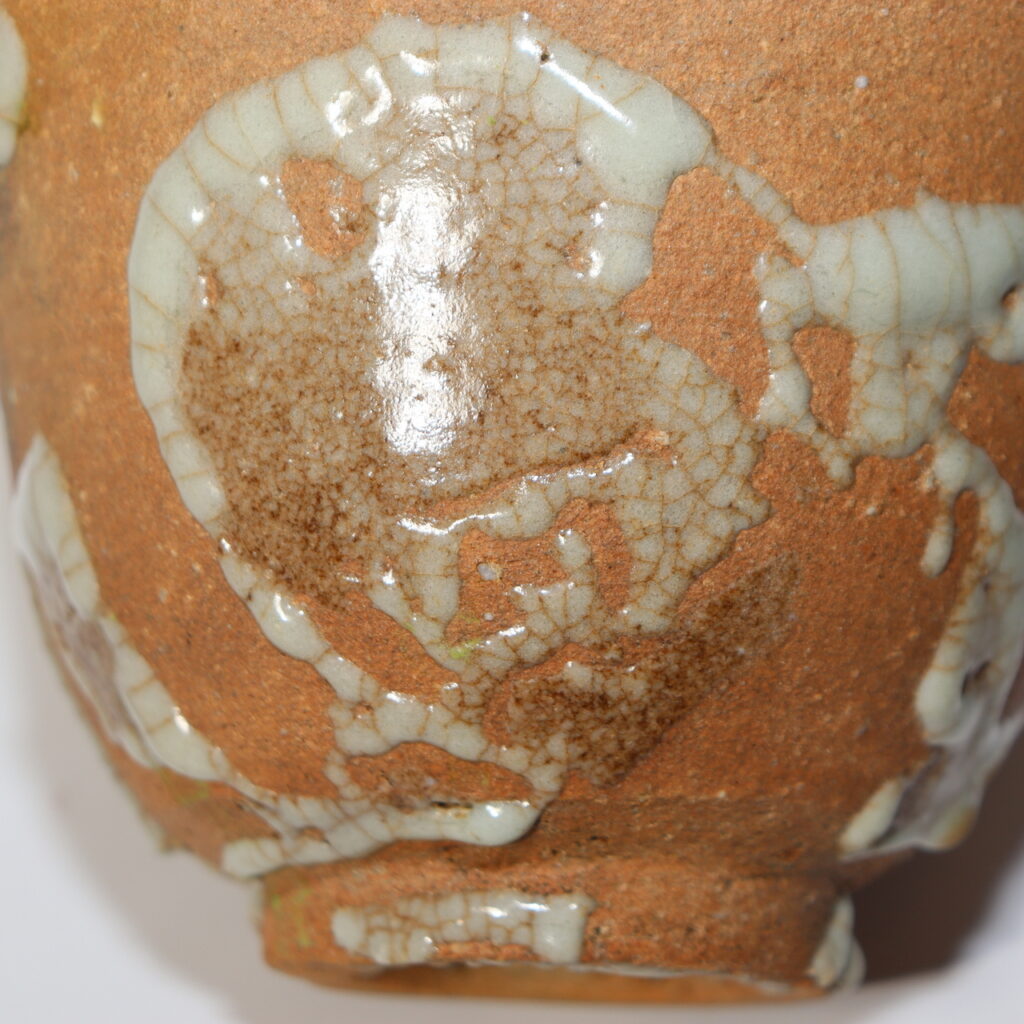
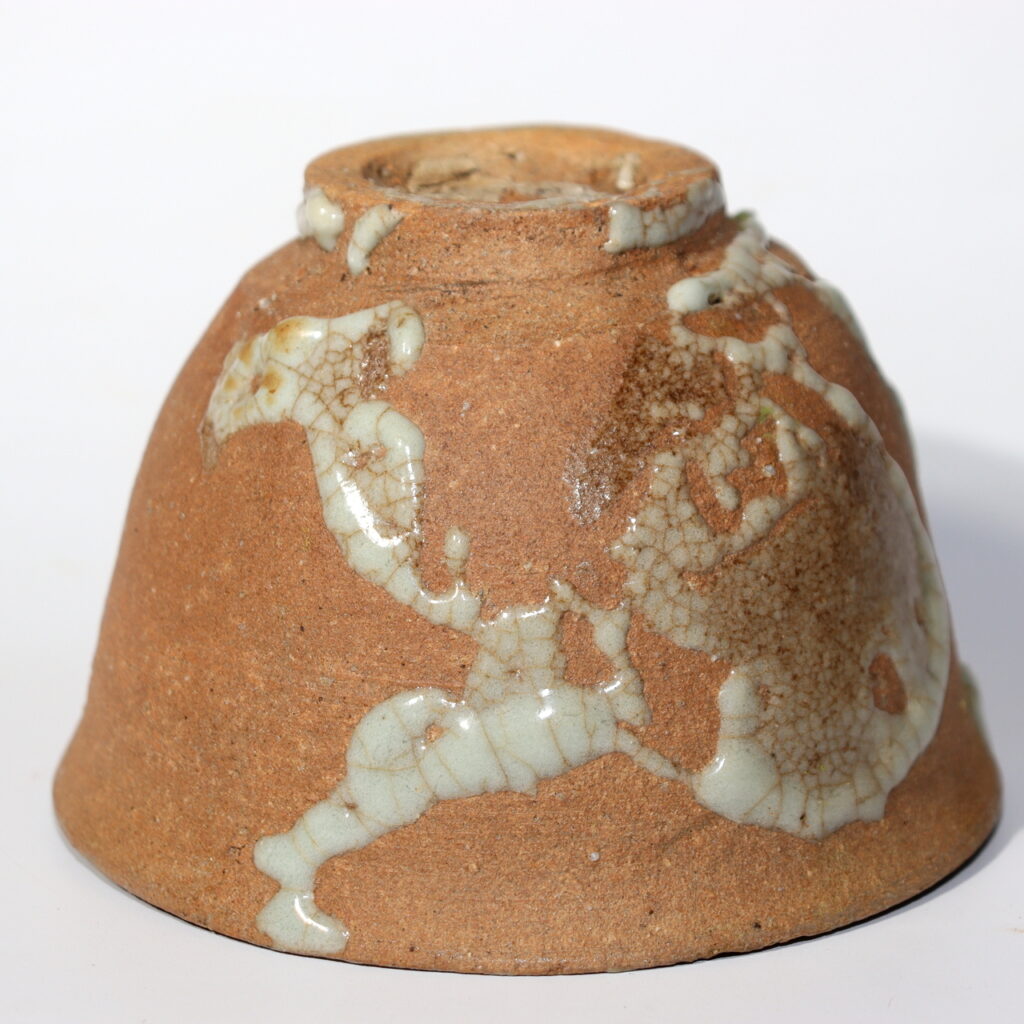
The Story Behind This Piece
Karatsu ware (唐津焼) originated in northern Kyushu and gained immense popularity among tea practitioners during the Edo period. What makes this particular tea bowl so fascinating is its transformation over time—a testament to both the material and spiritual endurance of Japanese ceramic art.
Traditionally fired in noborigama (climbing kilns), Karatsu pieces were subjected to uneven heat. In cooler zones of the kiln, the glaze did not fully melt, resulting in partial flaking and natural erosion over centuries. What remains today is a rich, textured surface where feldspar-based glaze forms cloudy, crackled patches against the coarse, warm clay body. The result is a dynamic interplay between intentional craft and natural transformation—an authentic expression of wabi-sabi.
The Appeal of This Item
At first glance, this tea bowl may seem modest, even unassuming. But closer inspection reveals layers of history encoded in its surface. The mikomi (interior) retains a lustrous glaze with soft crackling and a subtle sheen. Earthy tones dominate the form, with flowing patches of cream-white glaze tracing a map of the past.
The most striking feature is the kintsugi-style gold repair on the rim—a conscious act of preservation that elevates damage into art. Far from diminishing the bowl’s value, this repair deepens its story. It reminds us that breakage, when embraced and repaired with care, becomes part of a greater whole.
Why This Matters to International Collectors
This tea bowl holds tremendous appeal for collectors of Japanese antiques, especially those drawn to ceramic art, Edo period artifacts, and the concept of kintsugi. In a global context, where perfection often dominates the aesthetic narrative, this piece stands as a bold counterpoint. It honors the irregular, the incomplete, and the aged.
Its historical context, natural aging, and visible mending reflect not only technical artistry but also a profound cultural ethos—one that invites contemplation, humility, and a deeper appreciation for the past.
Whether you are curating a wabi-sabi-inspired interior, deepening your tea ceremony practice, or simply seeking an authentic object with soul, this Karatsu tea bowl offers a rare chance to connect with the Japanese spirit of imperfection.
Final Thoughts + Where to Find It
This is not just a tea bowl—it is a relic of time, fire, and the human touch.
You can view or purchase this one-of-a-kind piece here:
👉 Japanese Antique Karatsu Tea Bowl – Early to Mid Edo – Wabi Sabi Pottery
If this piece has already found a new home, please explore our other handpicked Japanese ceramic works and antiques:
👉 Explore our full collection at Koedo Sun Art